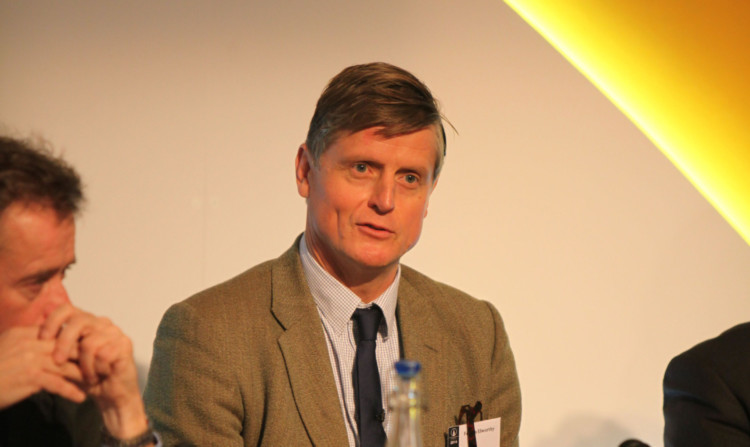Farmland investment portfolios have come and gone over the decades, but Forbes Elworthy of Craigmore Sustainables believes they offer a number of advantages as long as they are well constructed and stick to a few basic philosophies.
It was clear to all who heard him at the Oxford Farming Conference that he was speaking from experience.
Brought up on his family’s Craigmore Station in New Zealand, he had hands-on farming experience in his early years before gaining a degree in agricultural economics then going to Oxford University as a Rhodes Scholar in 1987.
He has since pursued a career in the City of London, followed by a period as farm manager at Craigmore.
In 2009 he joined forces with brother-in-law Mark Cox to create Craigmore Sustainables and its subsidiary Craigmore Farming.
The group has created a portfolio of 25 farming and forestry properties in New Zealand on behalf of investors, many of them from the UK.
“It has always been said that land is too expensive, but it has always been the best investment anyone can ever make,” he said.
However, there were only certain countries he regarded as “investible”.
They had to be politically stable and welcoming to investors. This ruled out Argentina, even though it had agricultural potential.
Otherwise he used share of world trade as a proxy for low cost of production. In other words, inherent high costs made a country uncompetitive and not suitable for investment.
Using these criteria he had decided New Zealand, Australia, Canada, the United States and north-west Europe were all suitable for farming investment. Farms had to be of above-average potential in their own regions.
“It is a case of quality, quality, quality when it comes to land. Cheapness is an admirable quality in a farmer, but not in farmland. It has proved to be the road to ruin in farmland investing in the past.
“At the same time, we have to choose sub-regions and farms that need capital expenditure,” he said.
There is little point in trying to place capital where there is plenty already.
That made New Zealand an ideal proposition, with extensive sheep or beef farms able to be converted into intensive irrigated dairy farms. Where there had previously been one house and a few buildings there would soon be five new houses, a milking parlour, a pivot irrigator and a herd of cows.
“We are seeking efficiency through creating clusters of farms, each with 3,000 to 6,000 cows,” said Mr Elworthy.
Craigmore Farming had also developed a management culture designed to mimic the behaviour of family farmers.
“We realised that corporate farming had often underperformed the best family farms, so we do not aim to be too corporate.
“Instead of focusing solely on current profits we take a total-return approach. There has to be value creation via incremental investment, and we are very keen on benchmarking and cost control,” he said.
To further replicate the owner/farmer approach, all the Craigmore farms are farmed by equity partners owning anything from 5% to 25% of the business they run.
“It is important to perform well. The top quartile farmer is the real hero wherever they farm, and we have to recognise that. The investment manager is just an intermediary whose costs to the business must not kill the golden goose,” added Mr Elworthy.
It would be a mistake, however, to think of Craigmore’s touch as being overly light. There was a centralised invoicing system and dual approvals for any investments or expenditure over agreed budgets.
The cost of fund-raising had also to be kept under control. So, rather than using capital introduction brokers with fees of 1% to 5% of the investment, Craigmore had itself become regulated, and Mr Elworthy was now living in Oxfordshire and leading a UK-based team which dealt directly with individuals, pension funds and other asset allocators.
It may not be farming as many of the Oxford delegates recognise it, but it could be part of the future.
Mr Elworthy saw opportunities aplenty, especially where land use change and staff development were part of the package. Returns could be good and there were efficiencies of scale.
His biggest threat came from the tendency for investors to panic during rough periods.
He also acknowledged that unless corporate farming was very efficient it could often be out-performed by the best family farming businesses.
